Connecticut State Capitol
Introduction
Text-to-speech Audio
Images
Connecticut State Capitol
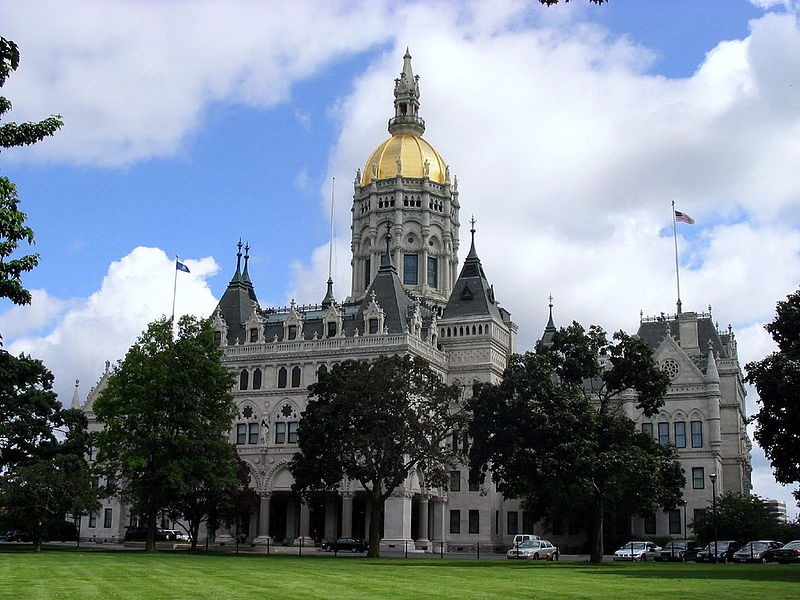
Close-up of the golden dome
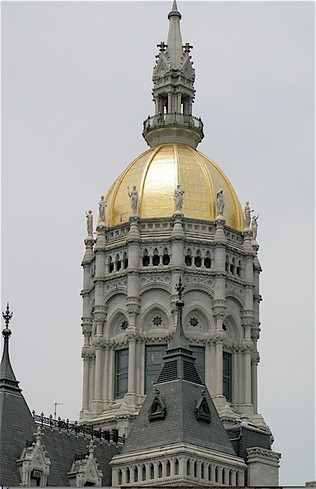
Vintage postcard of the Capitol and Bushnell Park (Connecticut State Capitol Tours)
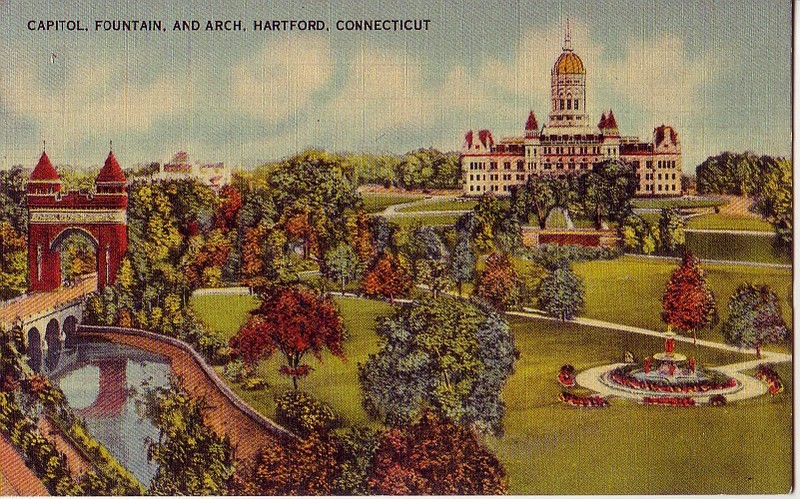
Interior of the Capitol dome (Connecticut State Capitol Tours)
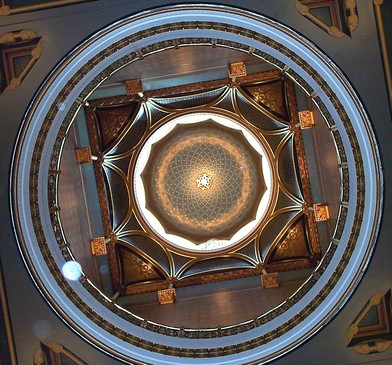
The Genius of Connecticut, original by Randolph Rogers (Connecticut State Capitol Tours)
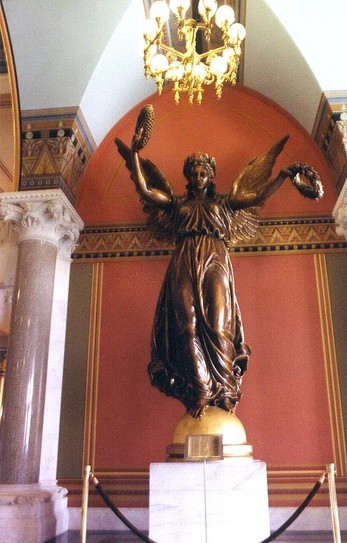
Backstory and Context
Text-to-speech Audio
Connecticut business owner and political figure James Batterson was in the business of producing cemetery headstones and monuments, particularly Civil War monuments which became very popular in the later years of the 19th century. He then branched out into building construction. His firm was responsible for constructing the Connecticut State Capitol according to the designs created by architect Richard M. Upjohn.
Born in England in 1828, Richard M. Upjohn grew up in New York and likely traveled abroad finding inspiration for his designs. His father Richard Upjohn Sr. (1802-1878) was also an architect, rising to prominence as the first president of the American Institute of Architects. Upjohn Sr. is best remembered for his Gothic Revival churches, especially Trinity Church in New York. From 1860 on, the two Upjohns often worked together on projects.
Design
Many of the building materials were local to New England, including marble from East Canaan, CT and granite from Westerly, RI. Atop the structure is an impressive gold leaf dome, encircled by 12 statues representing concepts such as agriculture, education, justice, and music. The design also includes a number of pointed arches, a typical feature of Gothic architecture. Inside, the floors are made of white and colored marble and red slate. Interior designer William James McPherson supplied the stained glass windows and light fixtures.
Sculptor Randolph Rogers created a bronze statue known as the Genius of Connecticut (original name: The Angel of the Resurrection), which adorned the Capitol's dome from 1878 until 1938, when it was damaged during a hurricane damaged it. Shortly afterward, it was melted down and used as scrap metal in WWII. Rogers's plaster model survived, however, and a new bronze replica was made to replace the original. It is now on view in the rotunda. She holds a wreath of dried flowers in one hand and a wreath of the state flower Mountain Laurel in the other. She wears leaves from a white oak tree (the state tree, symbolizing strength) on her head. Her wings symbolize protection of Connecticut's residents.
Sources
"Hartford’s New Capitol - The Building in Bushnell Park." New York Times, June 28, 1879. http://query.nytimes.com/mem/archive-free/pdf?res=9B04E5D91E3FE63BBC4151DFB0668382669FDE&module=Sear...
Howe, Jeffery. "Richard Upjohn." Boston College: Digital Archive of American Architecture. Accessed April 29, 2017. http://www.bc.edu/bc_org/avp/cas/fnart/fa267/upjohn.html.
Remetta, Lauren, and Ashly Vallera. "Connecticut’s Capitol Building – Inside and Out." Connecticut History. Accessed April 29, 2017. https://connecticuthistory.org/connecticuts-capitol-building-inside-and-out/.
Smith, Ann Y. "An Overview of Connecticut’s Outdoor Sculpture." Connecticut History. Accessed April 29, 2017. https://connecticuthistory.org/an-overview-of-connecticuts-outdoor-sculpture/.
Photo credits:
1: https://commons.wikimedia.org/wiki/File:Connecticut_State_Capitol,_Hartford.jpg.
2: https://commons.wikimedia.org/wiki/File:CT_state_capitol_tower_%26_dome.jpg.
3: https://www.cga.ct.gov/capitoltours/photohtmpages/VintagePhoto12.htm.
4: https://www.cga.ct.gov/capitoltours/photohtmpages/CapitolPhoto14.htm.
5: https://www.cga.ct.gov/capitoltours/photohtmpages/CapitolPhoto9.htm.
